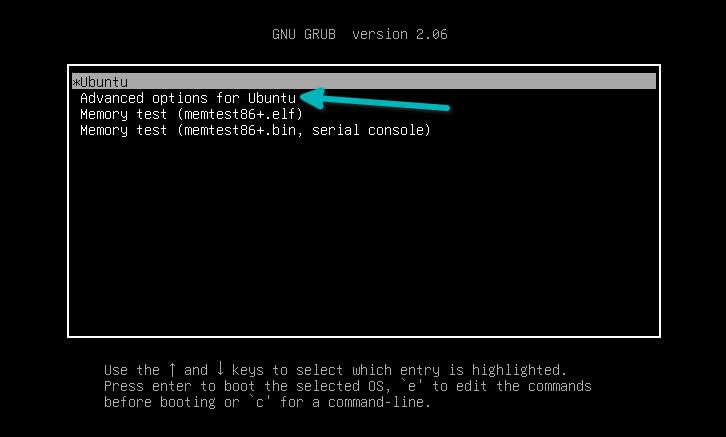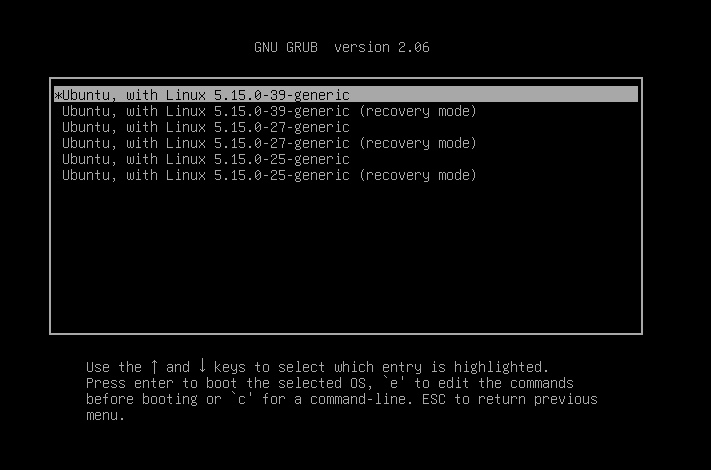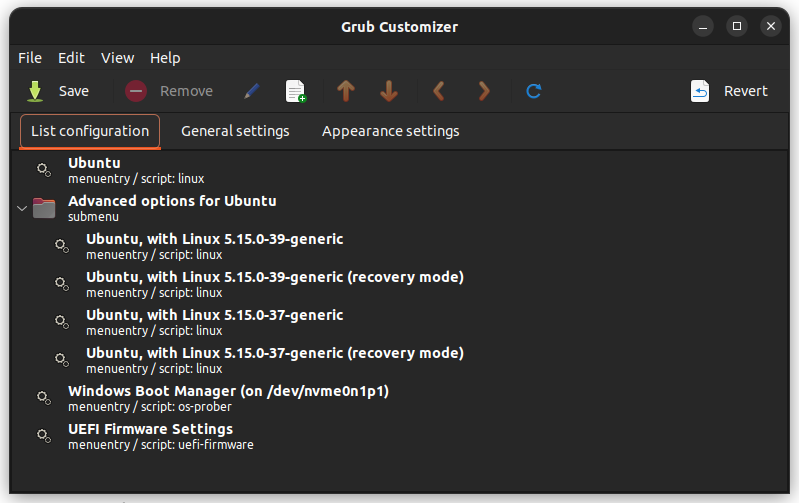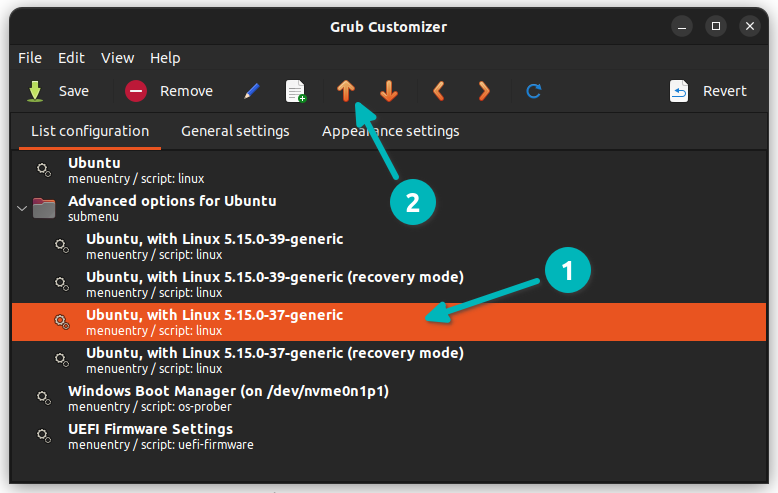How to boot to the old kernel of a Linux system by default
An older reader encountered this problem. New kernel updates in Linux Mint are not working as expected. Booting into an older kernel "fixed" the problem, but was troublesome in having to manually select the older kernel every time I booted. How to do it? That's what I'm going to show you in this tutorial.

This is a possible scenario. Your system received a kernel update, but somehow, things aren't going as smoothly as before.
You realize that if you boot into an older kernel (yes, you can downgrade the kernel), everything will go back to normal.
You will feel a little uncomfortable even though you are happy. Because you have to manually select the older kernel on every boot.
An older reader encountered this problem. New kernel updates in Linux Mint are not working as expected. Booting into an older kernel "fixed" the problem, but was troublesome in having to manually select the older kernel every time I booted.
It is not a good idea to remove the new kernel and use the old kernel, because the new kernel will be installed and used during the next system update.
Therefore, I recommend setting it to boot into an older Linux kernel by default. How to do it? That's what I'm going to show you in this tutorial.
Booting to an older Linux kernel
You may not know it, but your Linux distribution installs multiple Linux kernels on your system. Do not believe? Use the following command to list the installed kernels in Ubuntu:
apt list --installed | grep linux-image
When you upgrade your system, you will get a new version of the kernel. At this time, your system will automatically choose to boot to the latest available kernel.
In the grub screen you can go to Advanced option (older Linux versions):

ubuntu grub
Here you can see the available kernels to boot. Select the older one (entry without recovery option): 
grub advanced options
You won't notice any difference in display. Your files and applications remain intact.
Now that you have booted into the old kernel, it is time to have your system automatically boot into it.
Make the old kernel the default startup item
If you're happy using a Linux terminal and commands, you can modify the /etc/default/grub file and add the following lines to it:
GRUB_DEFAULT=saved GRUB_SAVEDEFAULT=true
Then use the following command to update GRUB:
sudo update-grub
What you are doing here is telling your system to save the currently used startup entry as the default startup entry for future runs of GRUB.
However, not everyone is good with the command line, so I will focus on a GUI tool called Grub Customizer.
Install Grub Customizer
Install Grub Customizer on Ubuntu-based distributions using the official PPA:
sudo add-apt-repository ppa:danielrichter2007/grub-customizer sudo apt update sudo apt install grub-customizer
For other distributions, please use your package manager to install this tool.
Use Grub Customizer to change the default startup items
When you run Grub Customizer, it displays available startup items. 
Here you have two options.
Option one: Select the desired kernel item and move it up using the arrow buttons (shown on the top menu). 
Moving old kernel up in Ubuntu grub
Option 2: Set the previously booted entry as the default entry. 
I recommend using the second option as it will work even with new kernel updates.
This way you can downgrade the kernel in Ubuntu or other distributions without even removing the new kernel version.
Please note that most distributions like Ubuntu only maintain two kernel versions at a time. Therefore, eventually your preferred old kernel will be removed when a new kernel version is released.
This clever trick has helped me get out of trouble. At the time I was installing the latest Linux kernel in Ubuntu and for some reason it had some compatibility issues with my audio system.
Whatever the reason, you now know how to automatically boot into the old kernel.
The above is the detailed content of How to boot to the old kernel of a Linux system by default. For more information, please follow other related articles on the PHP Chinese website!

Hot AI Tools

Undresser.AI Undress
AI-powered app for creating realistic nude photos

AI Clothes Remover
Online AI tool for removing clothes from photos.

Undress AI Tool
Undress images for free

Clothoff.io
AI clothes remover

Video Face Swap
Swap faces in any video effortlessly with our completely free AI face swap tool!

Hot Article

Hot Tools

Notepad++7.3.1
Easy-to-use and free code editor

SublimeText3 Chinese version
Chinese version, very easy to use

Zend Studio 13.0.1
Powerful PHP integrated development environment

Dreamweaver CS6
Visual web development tools

SublimeText3 Mac version
God-level code editing software (SublimeText3)

Hot Topics
 1386
1386
 52
52
 How to use docker desktop
Apr 15, 2025 am 11:45 AM
How to use docker desktop
Apr 15, 2025 am 11:45 AM
How to use Docker Desktop? Docker Desktop is a tool for running Docker containers on local machines. The steps to use include: 1. Install Docker Desktop; 2. Start Docker Desktop; 3. Create Docker image (using Dockerfile); 4. Build Docker image (using docker build); 5. Run Docker container (using docker run).
 Difference between centos and ubuntu
Apr 14, 2025 pm 09:09 PM
Difference between centos and ubuntu
Apr 14, 2025 pm 09:09 PM
The key differences between CentOS and Ubuntu are: origin (CentOS originates from Red Hat, for enterprises; Ubuntu originates from Debian, for individuals), package management (CentOS uses yum, focusing on stability; Ubuntu uses apt, for high update frequency), support cycle (CentOS provides 10 years of support, Ubuntu provides 5 years of LTS support), community support (CentOS focuses on stability, Ubuntu provides a wide range of tutorials and documents), uses (CentOS is biased towards servers, Ubuntu is suitable for servers and desktops), other differences include installation simplicity (CentOS is thin)
 What to do if the docker image fails
Apr 15, 2025 am 11:21 AM
What to do if the docker image fails
Apr 15, 2025 am 11:21 AM
Troubleshooting steps for failed Docker image build: Check Dockerfile syntax and dependency version. Check if the build context contains the required source code and dependencies. View the build log for error details. Use the --target option to build a hierarchical phase to identify failure points. Make sure to use the latest version of Docker engine. Build the image with --t [image-name]:debug mode to debug the problem. Check disk space and make sure it is sufficient. Disable SELinux to prevent interference with the build process. Ask community platforms for help, provide Dockerfiles and build log descriptions for more specific suggestions.
 How to view the docker process
Apr 15, 2025 am 11:48 AM
How to view the docker process
Apr 15, 2025 am 11:48 AM
Docker process viewing method: 1. Docker CLI command: docker ps; 2. Systemd CLI command: systemctl status docker; 3. Docker Compose CLI command: docker-compose ps; 4. Process Explorer (Windows); 5. /proc directory (Linux).
 What computer configuration is required for vscode
Apr 15, 2025 pm 09:48 PM
What computer configuration is required for vscode
Apr 15, 2025 pm 09:48 PM
VS Code system requirements: Operating system: Windows 10 and above, macOS 10.12 and above, Linux distribution processor: minimum 1.6 GHz, recommended 2.0 GHz and above memory: minimum 512 MB, recommended 4 GB and above storage space: minimum 250 MB, recommended 1 GB and above other requirements: stable network connection, Xorg/Wayland (Linux)
 Detailed explanation of docker principle
Apr 14, 2025 pm 11:57 PM
Detailed explanation of docker principle
Apr 14, 2025 pm 11:57 PM
Docker uses Linux kernel features to provide an efficient and isolated application running environment. Its working principle is as follows: 1. The mirror is used as a read-only template, which contains everything you need to run the application; 2. The Union File System (UnionFS) stacks multiple file systems, only storing the differences, saving space and speeding up; 3. The daemon manages the mirrors and containers, and the client uses them for interaction; 4. Namespaces and cgroups implement container isolation and resource limitations; 5. Multiple network modes support container interconnection. Only by understanding these core concepts can you better utilize Docker.
 What is vscode What is vscode for?
Apr 15, 2025 pm 06:45 PM
What is vscode What is vscode for?
Apr 15, 2025 pm 06:45 PM
VS Code is the full name Visual Studio Code, which is a free and open source cross-platform code editor and development environment developed by Microsoft. It supports a wide range of programming languages and provides syntax highlighting, code automatic completion, code snippets and smart prompts to improve development efficiency. Through a rich extension ecosystem, users can add extensions to specific needs and languages, such as debuggers, code formatting tools, and Git integrations. VS Code also includes an intuitive debugger that helps quickly find and resolve bugs in your code.
 vscode cannot install extension
Apr 15, 2025 pm 07:18 PM
vscode cannot install extension
Apr 15, 2025 pm 07:18 PM
The reasons for the installation of VS Code extensions may be: network instability, insufficient permissions, system compatibility issues, VS Code version is too old, antivirus software or firewall interference. By checking network connections, permissions, log files, updating VS Code, disabling security software, and restarting VS Code or computers, you can gradually troubleshoot and resolve issues.




